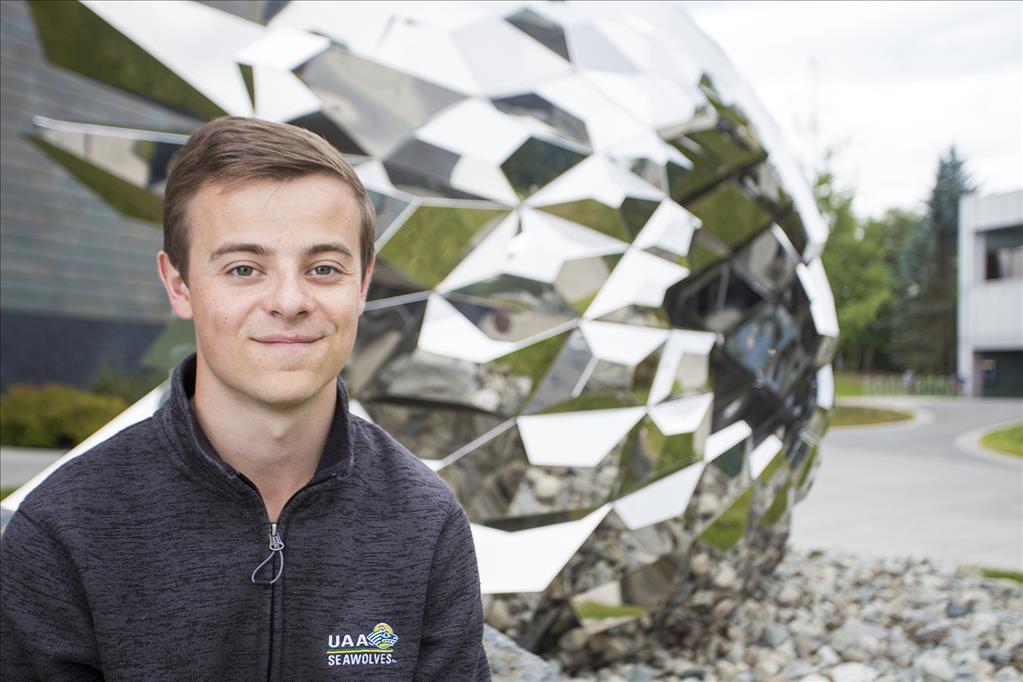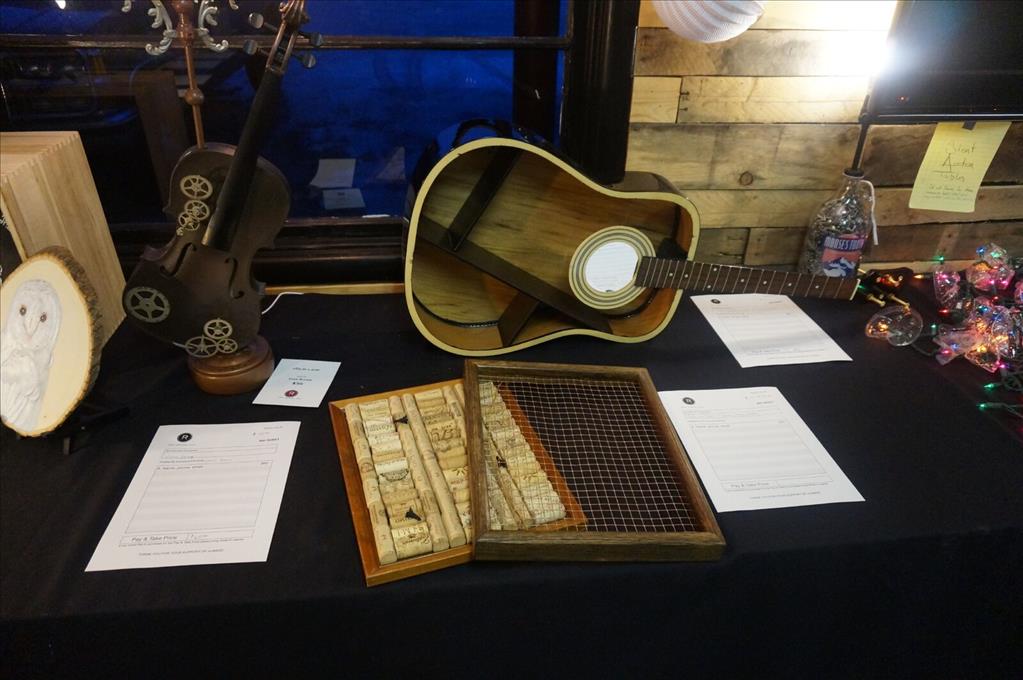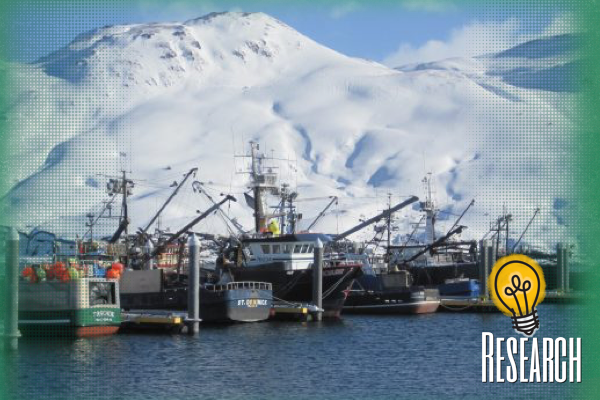Look at the world from thousands of angles
by Michelle Saport |
[embed]https://youtu.be/tbIOkdpjXHQ[/embed]
Step inside the new Inflorescence sculpture in front of the ConocoPhillips Integrated Science Building, and the world splits into hundreds of different views. What seems simple at first is astonishingly complex the closer you look. Created by Heath Satow, the nature-inspired artwork features more than 1,500 completely unique pieces of mirror-polished stainless steel, each offering a distinctive way to view the world around us. Satow visited the UAA campus in June to install the site-specific sculpture, commissioned through the Percent for Art program. We sat down with him to discuss his career in public art and the creative process behind Inflorescence.
Why did you become an artist?I had dreams to either be an artist, engineer or a stuntman when I grew up. My parents strongly persuaded me to pursue either engineering or the arts. I'm glad of that now, even if this is a less glamorous job.
Going through high school, I was very mathematically inclined, but I was also always the guy that couldn't see paper without drawing on it. I was always referred to as the "talented kid," but it was always in two-dimensional work like drawings. Since then I've fallen completely out of the practice of drawing, I've been working in 3-D for so long.
What sparked your interest in three-dimensional art?
When I went to college [at North Carolina State University in Raleigh], I knew I was going into engineering or design. The design college is actually harder to get into and engineering was my backup plan if I didn't get into design. At the time I got into the design program, I wanted to be an illustrator. So I went into the graphic design program not knowing that it had very little to do with illustration. At the time I thought: This is great, but it's not what I want to do.
Then I took a sculpture studio and that changed everything for me. I've always made stuff, designed functional things, like my own furniture for my college dorm room. But I never truly combined my artistic sensibilities with the building of things until I took that sculpture studio. It was like: Oh! [laughs] I get to engineer things, I get to build things, I get to be creative. All my interests made sense under that one tent. All of a sudden it all came into focus, and my life made sense. I feel really fortunate to have found this career.

Crews work to install "Inflorescence," a sculpture by Heath Satow, on the University of Alaska Anchorage campus. (Photo by Ted Kincaid / University of Alaska Anchorage)
Why did you choose to focus on public art?
I started out as an intern with a sculpture and architecture firm. I learned a lot there because after a time, my boss would hand me, literally, a napkin sketch, and I would figure everything out from there. I would design it, build it, install it, work out the budget. So I learned a lot about everything from dealing with clients, to wrangling budgets, to the challenges of working on an enormous scale.
I do very little gallery work. For really big-name artists, the galleries will pay for them to create new work; they'll front the bill. But as a smaller, struggling artist, you can't afford to do bigger work unless you're independently wealthy, something I have never been. I got used to working big in that first job and never wanted to quit that. So, I have focused almost exclusively on public art.
Also, I've never really been into the whole art-collector scene. I don't particularly like the idea of making super-expensive things that only one or two people enjoy. Public art is a way to get stuff out in front of tons of people. It's work that everyday people can enjoy. It's a great leveler.
What do you enjoy about creating public art?
I like the challenge. I think that my designer background fits with public art in that you're not just looking at a blank canvas and creating anything that comes to mind. I'm creating what I want to create, but it's not a blank canvas. I have a site, I have a client, I have a fixed budget. It's not a work that's going to get moved around to different galleries with white walls. It's made for this specific building, for these people, for this city. It's integrated with the location, and all of that is worked into what I make in the end. You have to plan. It's a puzzle to be solved, and I like that aspect of it.

Artist Heath Satow cuts the ribbon on his sculpture "Inflorescence" in front of UAA's ConocoPhillips Integrated Science Building on June 16, 2017. (Photo by Ted Kincaid / University of Alaska Anchorage)
What was your inspiration for Inflorescence?
With the sciences building, I wanted something that would relate across all the sciences and a lot of times that seems to boil down to math. You'll find that's a common thread throughout the sciences. The spiraling forms you see in the piece are an expression of mathematical processes, and you'll see them in forms from the micro, like DNA, to the macro, like galaxy formations.
And "inflorescence" is the idea of many similar things making up a larger thing. You get a common example with these flowers that are made up of tiny little flowers. A sunflower is one example of that. These spirals, the way things splay out... it's a mathematical pattern. You get different axes, frequencies and formats, and you find all those things in sunflower seed patterns. That was the start of this piece, and it grew from there.
Considering the scale and complexity of the piece, how involved were you with each step of the process? What were some of the challenges presented by the artwork?
I did all the design work, presentation, planning, working with the engineers, most of the welding, a lot of grinding and polishing, installation - I was involved every step of the way. The entire process took more time than expected. Starting with the engineering ... I took this finished design to my engineering consultants here in Los Angeles and said, "What do I need to change, if anything?" They run the numbers on it. We didn't have to change a thing, they just specified mostly how thick the materials would need to be for the structure and how many bolts would be needed for connection, etc. They're used to working with artists and helping to get to their vision. They figure out how to make my vision work. After a long back-and-forth process, the result is four or five pages of drawings and then 80-some pages of calculations that show that the numbers were crunched properly.

Viewers explore the many reflections, each completely unique, produced by the mirror-polished steel of "Inflorescence." (Photo by Ted Kincaid / University of Alaska Anchorage)
What has the response been of the campus community and public to the art installation?
It's been amazing. I like that people get different things out of it. They see it from different angles and don't understand it fully right away. I like work that keeps your brain ticking. It needs to be a puzzle for people. Even though it's a very complex form, it's designed to keep your attention so you want to figure it out. Overall, it also has a very focused form, so that eases you into it.
How do you feel about the piece?
I'm incredibly happy with it. I'm as happy as I've ever been with a piece... I've known this thing inside and out for years. I've been living and breathing CAD models of it. I have 3-D prints of it - holding those in my hands, building the real thing. Yet I had never seen it assembled as the final thing until we installed it at UAA. I keep seeing new things with it from angles I hadn't noticed before. So that's really cool to me. If someone sees it a hundred times and they still want to look at it, that's success.
See more of Heath's work online.
• Website: publicsculpture.com • Facebook: facebook.com/publicsculpture • Instagram: instagram.com/publicsculpture • Vimeo: vimeo.com/satow
Compiled by Michelle Saport and Kirstin Olmstead. Featured image provided by Heath Satow.
 "Look at the world from thousands of angles" is licensed under a Creative Commons Attribution-NonCommercial 4.0 International License.
"Look at the world from thousands of angles" is licensed under a Creative Commons Attribution-NonCommercial 4.0 International License.














